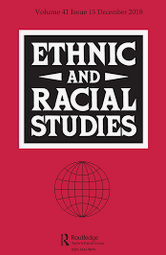 Who can be from a place where virtually everyone –or at least everyone’s parents or grandparents– come from somewhere else? Who are “we”, in such a context? And, what resources can such “we” claim rights over? Over two years, from 2016 to 2018, I explored these questions in a peripheral neighbourhood in the city of Barcelona. The area, which was traditionally subjected to territorial stigma, was built in its current shape by internal migrants coming to the city from other parts of Spain in the second half of the twentieth century. More recently, at the turn of the millennium, people coming from abroad moved in to this part of the city. In such a context, how do the more established groups differentiated themselves from the more recently arrived?
Who can be from a place where virtually everyone –or at least everyone’s parents or grandparents– come from somewhere else? Who are “we”, in such a context? And, what resources can such “we” claim rights over? Over two years, from 2016 to 2018, I explored these questions in a peripheral neighbourhood in the city of Barcelona. The area, which was traditionally subjected to territorial stigma, was built in its current shape by internal migrants coming to the city from other parts of Spain in the second half of the twentieth century. More recently, at the turn of the millennium, people coming from abroad moved in to this part of the city. In such a context, how do the more established groups differentiated themselves from the more recently arrived?
The research identified the boundary-work carried out by the more estabished group and how it is substantivized thanks to the Barcelona-wide “civic ideology”. This way the project showed how concrete public policies and the rhetoric used to justify them serves as a resource for the articulation of social boundaries at the micro level.
By focusing on the discursive construction of we and them between internal and international migrants, the research contributes to the denaturalisation of the sometimes problematic clear-cut categorization between internal and international migration as King and Skeldon did in their fantastic 2010 article Mind the gap! Integrating Approaches to Internal and International Migration, and which is one of the negative consequences of the well-spread methodological nationalism in Migration Research (Wimmer and Glick Schiller 2002).
The article is coming soon in the prestigious journal Ethnic and Racial Studies!